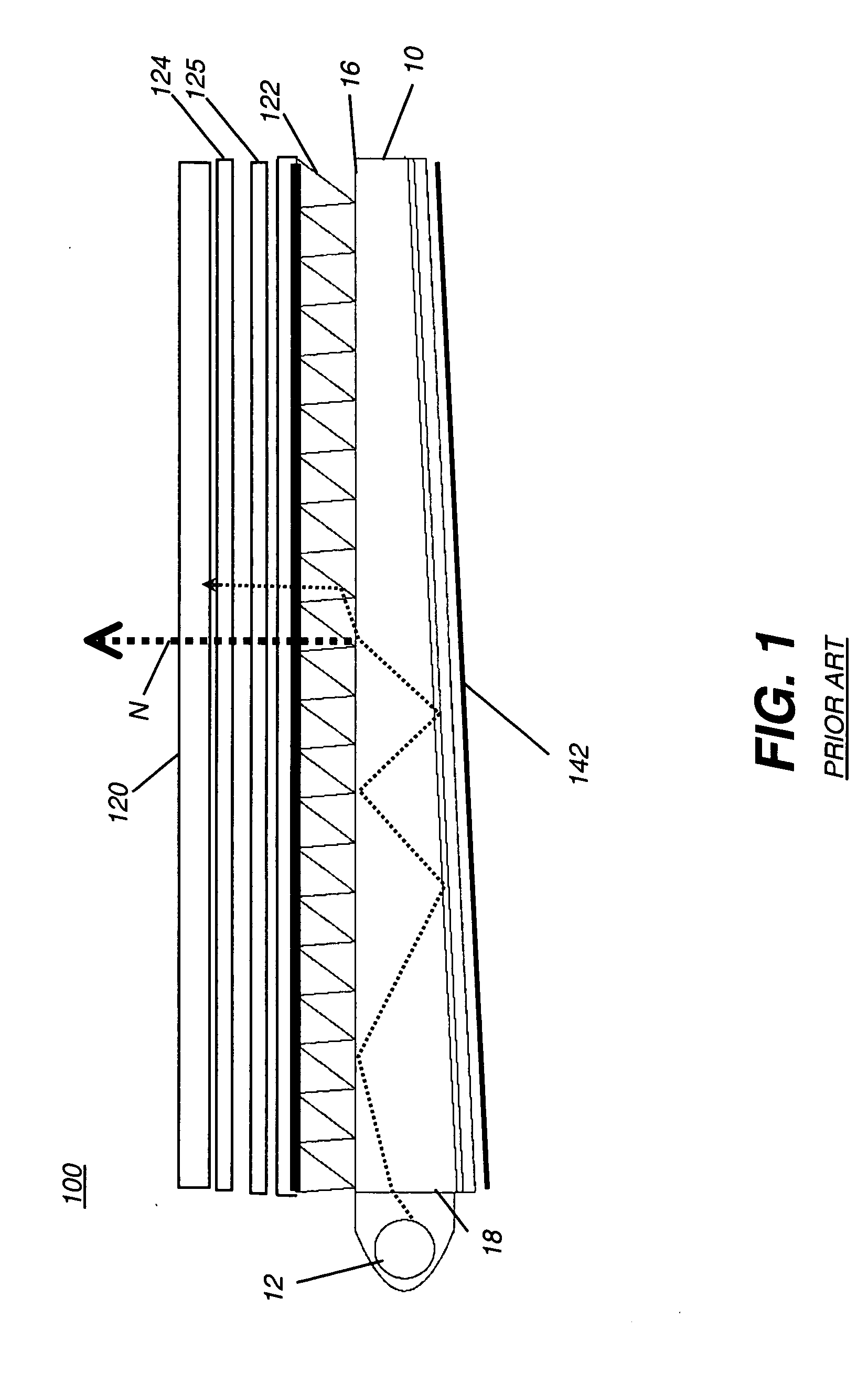Polarizing turning film with multiple operating orientations
a turning film and polarizing technology, applied in the field of turning films, can solve the problems of increasing the cost reducing the efficiency of illumination system design, and reducing the overall contrast, even with a b
- Summary
- Abstract
- Description
- Claims
- Application Information
AI Technical Summary
Benefits of technology
Problems solved by technology
Method used
Image
Examples
example 1
[0074] Referring to the contour plots of FIGS. 8A-8D, the input angle θin=63°. In these plots, the abscissa (x-axis) shows the far base angle; the ordinate (y-axis) shows index of refraction n. FIGS. 8A through 8D are organized in a sequence that can be described with respect to FIG. 3A. FIG. 8A shows response at the first interface, at which light from light guiding plate 10 is incident on flat surface 22. FIG. 8B shows response at the second interface, where light within turning film 20 is incident on far surface 26. FIG. 8C shows output angle response, θout. FIG. 8D is a composite contour plot, showing the overlap of results by the combined conditions represented in FIGS. 8A, 8B, and 8C. The composite contour plot of FIG. 8D then shows the “working space” available for the design of turning film 20 providing optimized polarization separation.
[0075]FIG. 8A is a contour plot with areas 1 and 2 showing a parameter space of far base angle β1 and index of refraction satisfying |θin−θ...
example 2
[0081]FIGS. 9A through 9D show a similar sequence to that of FIGS. 8A through 8D, using the same light redirecting structures and materials, but with an input principal angle θin=70°. By comparison with FIG. 8A, note that area 1 |θin−θb|2 |θin−θb|3 |θin−θb|1 |θout|in−θb|4−θb|3, where |θout|in−θb|4−θb|4 satisfying |θout|in−θb|4−θb|<10°.
example 3
[0082]FIGS. 10A through 10D show a similar sequence to that of FIGS. 9A through 9D, using the same structures and materials, but with an input principal angle θin=75°. Neither Area 1 |θin−θb|2|θin−θb|3 in FIG. 10A satisfies |θin−θb|3 satisfies |θout|in−θb|4−θb|4 satisfies |θout|in−θb|4−θb|<10°.
[0083] As one advantage of the present invention, polarizing turning film 20 can be formed as a light redirecting article that can be adapted to accept light over more than one principal angle or range of principal angles. Referring again to FIG. 3A, a first range of principal angles would be used to determine the relative slant of far surface 26 when turning film 20 is disposed in one position. Turning film 20 can alternately be used in an orientation in which it is rotated, within the same plane, 180 degrees from its original position. As shown in FIGS. 20A and 20B, turning film 20 is disposed in one position when incident light is at principal angle θin1 and is rotated 180 degrees within t...
PUM
 Login to View More
Login to View More Abstract
Description
Claims
Application Information
 Login to View More
Login to View More - R&D
- Intellectual Property
- Life Sciences
- Materials
- Tech Scout
- Unparalleled Data Quality
- Higher Quality Content
- 60% Fewer Hallucinations
Browse by: Latest US Patents, China's latest patents, Technical Efficacy Thesaurus, Application Domain, Technology Topic, Popular Technical Reports.
© 2025 PatSnap. All rights reserved.Legal|Privacy policy|Modern Slavery Act Transparency Statement|Sitemap|About US| Contact US: help@patsnap.com



